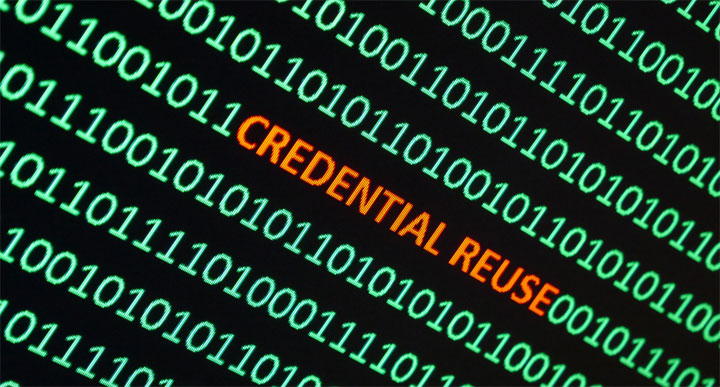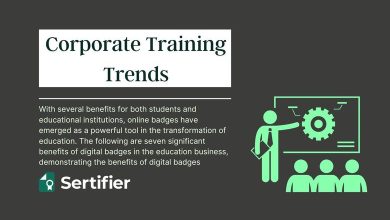What is Credential Management – Definition & Best Practices
Table of Contents
With the rapid development of the digital age and the impact of globalization, information and data sharing has accelerated on digital platforms, and the security of digital identities (usernames, passwords, certificates, etc.) has gained significant importance.
Credential management has become indispensable to ensure this security and grant access to the right people in the digital world.
Definition and Abstract
Credential management refers to the process of securely creating, storing, updating, and access control of digital identities. This process manages usernames, passwords, certificates, and other authentication information strategically and securely.
Security Importance
Increasing threats and cyber-attacks in the digital world have made digital credential management critical. Proper credential management practices provide an effective defense against malicious attacks and ensure the security of sensitive data.
Goals and Scope
The aim of this article is to explain the concept of credential management and emphasize the importance of secure credential management in accordance with the dynamics of the digital world. We will also examine the role of credential management in today’s remote working conditions, its importance in educational institutions, and its possible evolution in the future.
Content Structure
The paper will start with the definition and components of credential management, followed by topics such as security, data privacy, business continuity, and efficiency. We will then examine the impact of the telecommuting era on credential management and its importance for educational institutions and discuss how credential management may evolve with future developments and technologies.
This article is intended to lay the foundation for the concept of credential management and introduce readers to its critical importance, best practices, and possible future developments in this area. Now, let’s deepen the article by exploring in detail the underlying components and functions of credential management.
Introduction to Credential Management

In the digital world, individuals and organizations use a variety of credentials to identify and communicate securely across various digital platforms. This includes items such as credentials, usernames, passwords, certificates, and biometric data. Credential management refers to the process of effectively managing and protecting these credentials.
What is Credential Management?
Credential control entails the system of creating, storing, updating, and getting the right of entry to control virtual identities (credentials). Credentials are the credentials that users use to get access to digital systems. These credentials consist of various factors, including usernames, passwords, certificates, keys, and biometric statistics.
Credential control allows users to soundly create, update, share, and keep these credentials. It also guarantees that these credentials are protected from unauthorized get entry and may be securely retrieved when wished.
Components of Credential Management
The credential management system consists of the following main components:
Credentials
Credentials are information that users use to access digital platforms. Usernames, passwords, certificates, and biometric data are important examples of this component.
Authentication
Authentication is the process used to verify users’ credentials. This process involves users providing correct identification information and checking the accuracy of this information.
Identity Management
Identity management refers to the process of creating, updating, storing, and accessing users’ digital identities. This process aims to ensure effective management and security of credentials.
Functions of Credential Management
A credential management system performs the following essential functions:
Identity Creation and Update
It generates secure and unique credentials when adding new users to the system or updating existing user information.
Identity Storage and Security
It securely stores users’ credentials and protects them against unauthorized access.
Access Control
It controls the authority to access specific resources or platforms through credentials.
Identity Retrieval and Renewal
Retrieves and updates credentials when necessary, reducing security risks.
Credential management has a critical role in ensuring digital security and that sensitive information reaches the right people. This process is a cornerstone of cybersecurity strategies and is vital for secure digital communications.
This introduction laid the foundation for the concept of credential management and outlined that we will delve deeper into the importance, implications, and best practices of credential management in the remainder of this article.
The Importance of Credential Management

Credential management ensures that digital identities (credentials) are securely managed, stored, and controlled. The critical importance of this process can be addressed from several perspectives:
Importance from a Security Perspective
Credential management is critical to security. Proper credential management practices provide an effective defense against threats such as cyber-attacks and malicious activities. It prevents negative people from gaining unauthorized access to systems by capturing credentials. Protecting credentials with strong passwords, robust authentication processes, and preventing unauthorized access are vital to protect organizations’ digital assets.
Data Confidentiality and Integrity
Credential management protects data confidentiality and integrity. It is used to safely deliver users’ identity, sensitive, and personal information to the right people. The security of this information is critical for protecting personal privacy and the integrity of data.
An effective credential management system prevents unauthorized persons from accessing this information, thus ensuring data security and confidentiality.
Business Continuity and Efficiency
Credential management has a positive impact on business continuity and efficiency. Providing users with fast and secure access to their credentials enables business processes and minimizes disruptions. This improves business continuity. Furthermore, an effective credential management system allows users to access different platforms and applications with a single identity, which increases business efficiency and reduces complexity.
With these aspects, Credential management provides a strategic advantage for businesses and supports smooth operation in daily operations.
These essential aspects of credential management emphasize why it is a critical element of this process in the digital world. Effective credential management practices in critical areas such as security, data privacy, and business continuity help organizations minimize digital risks and create a secure business environment.
Credential Management in the Age of Remote Work

The era of remote working has become an increasingly common trend in the modern business world. Employees can work from different geographical regions, their homes, or remote offices during this period. This situation significantly affects the credential management process.
Increased Digital Access and Security Challenges
Remote working may require employees to access work resources from different devices and different networks. This makes the credential management process more complex. Increased digital access creates security challenges because various networks and devices can create potential vulnerabilities.
Credential management then addresses these challenges by ensuring employees are securely authenticated and tightly control their access rights.
Remote Access Security and Attack Risks
The security of credentials is of great importance in the remote working era. Attackers can target the credentials of remote workers and try to gain unauthorized access to systems through these credentials. This increases cyber security risks and can pose serious dangers for organizations.
An effective credential management system minimizes these attack risks during the remote working period by providing strong authentication policies and security measures.
Multi-Device Usage and Security
Employees can access work resources from different devices during the remote working period. This may include access via other platforms such as mobile devices, tablets, and personal computers. Access via different devices complicates the credential management process and can increase security risks.
In this case, credentials management effectively manages multi-device use, ensuring that each device passes through the authentication process securely and increases security.
Credential management is a critical element in terms of security and access management during the telecommuting period. During this period, organizations should strengthen and update their credential management systems, educate employees about the importance of this process, and raise awareness. In this way, the security challenges of the telecommuting era can be effectively addressed.
Credential Management for Educational Institutions

Educational institutions should carefully manage the credential management process to provide access to digital resources for students, teachers, staff, and other stakeholders and to ensure that they can access these resources securely. Credential management for educational institutions should be designed according to specific characteristics and needs.
Student and Staff Identity Management
Educational institutions must securely manage the identity information of their students and staff and provide access to the necessary resources using this identity information. This is critical for student and staff safety and data protection. Educational institutions should keep these credentials up to date, prevent unnecessary access, and implement effective authentication processes to ensure privacy.
Educational Technologies and Security
Educational institutions are increasingly using digitalized educational processes and educational technologies. While these technologies enrich students’ learning experience, they can also complicate the credential management process. Educational institutions must ensure credential security when integrating and using these educational technologies and develop credential management applications compatible with these technologies.
Prospective Credential Management in the Education Sector
The education sector is constantly evolving and changing. In the future, credential management may be further strengthened by innovative technologies such as the use of biometric data, multi-factor authentication, and blockchain-based identity management. Educational institutions should anticipate the future of credential management and be prepared to adapt to these changes.
Credential management has an indispensable role for educational institutions in terms of the security of students and staff, data privacy, and the effectiveness of educational processes. Effective management of this process is an important step to increase quality and ensure security in education.
The Future of Credential Management
Credential management is undergoing a significant evolution in the rapidly changing digital world, which is expected to accelerate further. Technological advances and increased security requirements will lead to the development of new methods and technologies in credential management.
Biometric and Multi-Factor Authentication
In the future, the use of biometric data will become more common instead of password-based authentication systems. Biometric data such as fingerprints, retinal scans, and facial recognition will come to the fore as secure and user-friendly authentication methods. The use of multi-factor authentication (MFA) systems will also increase. Security provided by the combination of multiple verification methods will be a significant advance in the field of credential management.
Blockchain and Credential Security
Blockchain technology will play an essential role in improving security in credential management processes. Thanks to the distributed ledger structure, credentials and credentials can be stored more securely, and access to this information can be controlled. This significant technological advancement can be integrated into credential management systems to increase data security and integrity.
Artificial Intelligence-Supported Credential Management
Artificial intelligence (AI) and machine learning (MO) algorithms will be used in credential management processes, such as extensive data analysis, attack detection, and automatic identity verification. AI and MO can pre-empt potential security threats by detecting anomalies and help update systems automatically.
Autonomous Identity Management
In the future, users will encounter autonomous identity management systems where they can control and manage their identities more. These systems will give users more freedom to share and manage their credentials. Personalized permissions and greater confidentiality of certificates may be one of the future directions of credential management.
These technological advances in credential management are essential for improving security and making processes more efficient. However, adopting and integrating these new technologies needs to be handled with care. It is of great importance to successfully incorporate these technological developments to make the credential management system more secure, user-friendly, and effective in the future.
Conclusion
Credential management is one of today’s digital age’s most critical security and access control processes. The credential management process is indispensable to ensure secure and authorized access to digital platforms, protect sensitive data, and take precautions against cyber threats.
In this article, we have discussed the concept of credential management’s components and functions in detail. We have also discussed the importance of credential management in terms of security, its critical role in the era of increasing digital access and remote working, its value for educational institutions and its potential future developments.
It should not be forgotten that the credential management process is critical not only for individuals and organizations but also for the general security of society. Ensuring secure authentication processes reduces cybercrime and creates a safer life in the digital world.
In the future, we believe that technological developments such as biometric verification, blockchain integration, AI-powered management, and autonomous identity management will be decisive in the field of credential management. Correct and effective use of these technologies will make the credential management process more robust and more secure.
Credential management is one of the cornerstones of digital security, and proper understanding and implementation of this process is essential to ensure safety in the digital world. For a secure digital future, investment in and continuous improvement of the credential management process is the key to a safe life in the digital world.



